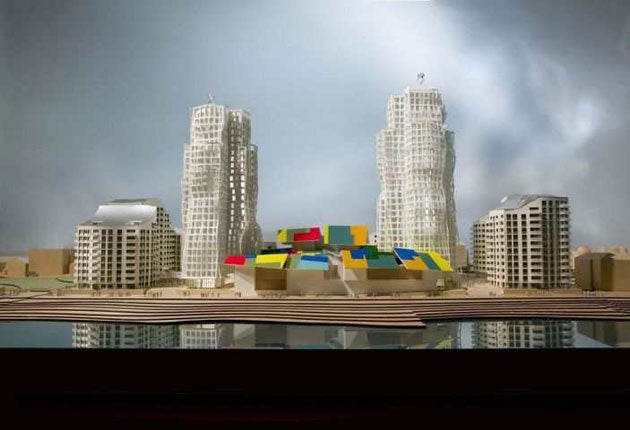Gehry's £290m vision for Hove scrapped

Your support helps us to tell the story
From reproductive rights to climate change to Big Tech, The Independent is on the ground when the story is developing. Whether it's investigating the financials of Elon Musk's pro-Trump PAC or producing our latest documentary, 'The A Word', which shines a light on the American women fighting for reproductive rights, we know how important it is to parse out the facts from the messaging.
At such a critical moment in US history, we need reporters on the ground. Your donation allows us to keep sending journalists to speak to both sides of the story.
The Independent is trusted by Americans across the entire political spectrum. And unlike many other quality news outlets, we choose not to lock Americans out of our reporting and analysis with paywalls. We believe quality journalism should be available to everyone, paid for by those who can afford it.
Your support makes all the difference.To its supporters, the plan for asymmetric towers on Brighton's seafront designed by Frank Gehry was nothing less than Britain's Guggenheim. Detractors dubbed it Tin Can Alley.
Five years after the £290m project for one of the Canadian architect's lop-sided buildings was unveiled, those opposed to it were claiming victory yesterday after its scrapping was announced. From the Bilbao Guggenheim to the Issey Miyake shop in New York, Gehry's creations are dotted across the world, but, apart from this year's pavilion for the Serpentine Gallery in Kensington Gardens, London, and a cancer-care centre in Dundee, the UK still doesn't have one of his large-scale projects.
Piers Gough, an architect born in Brighton and a friend of Gehry, said: "It's a heartbreak, and a loss for Britain." Gough's CZWG practice collaborated on the scheme based around a sports complex and 750 flats on the site of a dilapidated leisure centre in Hove.
The project has been plagued by funding difficulties since bankers said they were withdrawing its main financial backing. Any hope the money could be found was ended by Brighton & Hove City Council this week when the authority said the financial crisis had forced it to drop the scheme.
Mary Mears, the council leader, said: "The situation is complicated by the economic downturn. Virtually all major public works these days are dependent on private investment and, at the moment, that has dried up."
The final design for towers of up to 20 storeys, amid the Regency seafront, was unveiled in 2005 after blueprints for taller towers caused an outcry. Gehry said the new design, devised when the actor Brad Pitt was working as an intern at his California studio, was inspired by Edwardian ladies in flowing dresses. Gehry said: "It's a metaphor, not a copy. I've never done this before, but it felt right."
Opponents felt differently and have called for the 1938 King Alfred Leisure Centre to be refurbished. Valerie Paynter, leader of Save Hove which opposes Gehry, said she is delighted with the decision. "The whole thing was puffery," she said. "I'd like to see [the leisure centre] refurbished, with no hoity-toity numbers, no iconic, landmark crap."
Gehry, 79, has made it clear what he thinks of those who oppose "icons". "They're part of the reason that things are ugly, but they don't realise it," he said. "Through history, public buildings are iconic and if we want less we have no self-esteem. We might as well go back to the caves. If you add up how many iconic buildings have been built recently, how many are there? 50? 100? It's nothing. So people can fuck off."
Council leaders will meet next week to discuss a more modest scheme.
Frank Gehry: A designer life
*Frank Gehry was born in Toronto in 1929 as Ephraim Goldberg. After his father had a heart attack his familyrelocated to Los Angeles in 1947. After Gehry graduated from the University of Southern California's School of Architecture in 1954 he joined the army. It was during this time that he began experimenting with design as one of his assignments was to make furniture for the soldiers. It was Gehry's first wife, Anita, who urged him to change his name, which he did in the early 1950s. He married his current wife, Berta, in the mid 1970s. He has two daughters and two sons.
Join our commenting forum
Join thought-provoking conversations, follow other Independent readers and see their replies
Comments